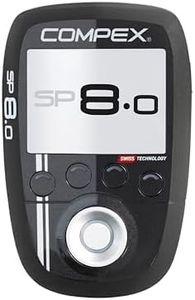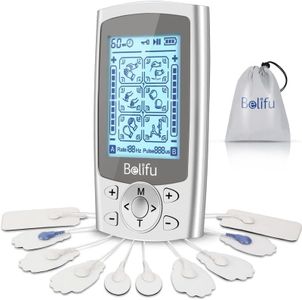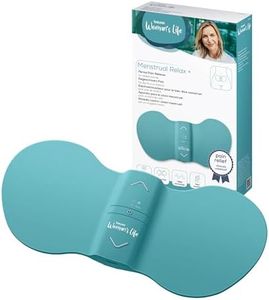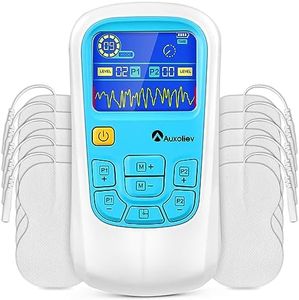We Use CookiesWe use cookies to enhance the security, performance,
functionality and for analytical and promotional activities. By continuing to browse this site you
are agreeing to our privacy policy
10 Best TENS Units
From leading brands and best sellers available on the web.Buying Guide for the Best TENS Units
Choosing a TENS unit (Transcutaneous Electrical Nerve Stimulation) can greatly help in managing pain at home in a gentle and non-invasive way. The right device depends on your pain needs, lifestyle, and level of comfort with technology. As you begin the selection process, think about where and how often you will use it, what types of pain you experience, and whether you need something simple or with more features. Focusing on the major specifications can ensure you get a device that's both effective and user-friendly.Number of Modes/ProgramsModes or programs refer to the pre-set patterns and types of electrical pulses a TENS unit can deliver. This is important because different pain types and body areas can respond better to distinct stimulations, offering more relief or maximizing comfort. Basic units might have only a few simple modes, while more advanced ones can have many options, including acupuncture-like, massage, or custom waveforms. If you have a single type of pain or just want straightforward relief, a basic device will do. If you want to experiment or target different pain issues, look for a TENS unit with more modes to find what feels best on your body.
Intensity LevelsIntensity levels control how strong the electrical stimulation is. More levels mean finer control to adjust the sensation from very gentle to quite strong, allowing you to find a setting that’s comfortable without being painful. Entry-level units often have fewer settings, which is fine if you only need light to moderate stimulation. If your pain changes or you might use the unit on multiple body parts or by different people, a unit with more intensity steps gives you better flexibility and comfort.
Number of ChannelsChannels determine how many areas you can treat at one time. A single-channel device can run one pair of pads for one area, while dual or multi-channel devices can run two or more pairs of pads, letting you treat different body parts or adjust different sets of pads independently. If you only need to treat one spot at a time, a single channel will suffice. But if you have pain in two areas, like your back and shoulder, a multi-channel device lets you address both simultaneously with separately controlled settings.
Power Source (Battery Type)This refers to whether the TENS unit uses disposable batteries or a rechargeable battery. Disposable batteries are often AA or AAA and easy to replace but add extra ongoing cost and waste. Rechargeable units plug in to charge, which can be more eco-friendly and convenient if you use the unit often. If you travel or don’t want to worry about keeping an internal battery charged, a battery-powered model might be better. Otherwise, rechargeable is simpler for regular home use.
Display and ControlsThe display and controls are the interface you use to operate the device. Simple devices may use basic knobs or buttons, while advanced ones feature larger screens and more detailed menus. A clear, simple layout is important for ease of use—especially for those who may not be tech-savvy or have vision challenges. If you value simplicity or have limited dexterity, look for straightforward controls. If you enjoy more control and don't mind a menu system, a bigger display and more settings may be preferable.
Pad Quality and SizePads are the pieces that make contact with your skin to deliver the stimulation. Larger pads cover more surface area and are better for big muscle groups, while smaller ones are useful for precise locations like joints. Some pads stick better and last longer, while others are more basic and may need frequent replacement. If you'll use the TENS unit for big muscle areas like your back or thighs, check for larger pads. For smaller spots or intricate placement, smaller, higher-quality pads are best. Consider the cost and availability of replacement pads as well.
Timer SettingsTimer settings allow you to choose how long the device runs. This helps prevent overstimulation and lets you control your treatment session length. Basic timers might have only a few fixed options, while advanced ones offer custom timing. If you want the device to turn off automatically or fit sessions into your daily routine, adjustable timer settings offer convenience and peace of mind.











